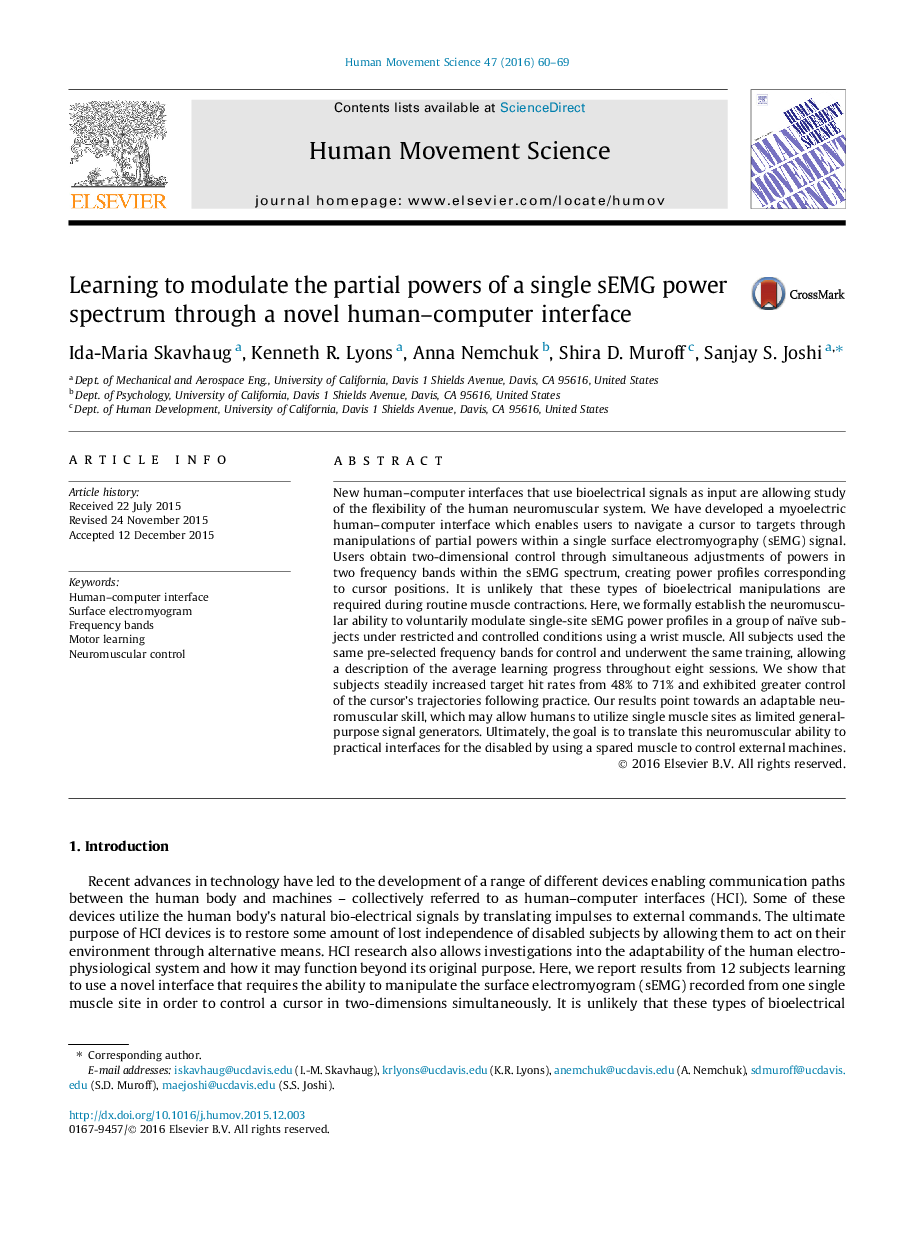| Article ID | Journal | Published Year | Pages | File Type |
|---|---|---|---|---|
| 7291421 | Human Movement Science | 2016 | 10 Pages |
Abstract
New human-computer interfaces that use bioelectrical signals as input are allowing study of the flexibility of the human neuromuscular system. We have developed a myoelectric human-computer interface which enables users to navigate a cursor to targets through manipulations of partial powers within a single surface electromyography (sEMG) signal. Users obtain two-dimensional control through simultaneous adjustments of powers in two frequency bands within the sEMG spectrum, creating power profiles corresponding to cursor positions. It is unlikely that these types of bioelectrical manipulations are required during routine muscle contractions. Here, we formally establish the neuromuscular ability to voluntarily modulate single-site sEMG power profiles in a group of naïve subjects under restricted and controlled conditions using a wrist muscle. All subjects used the same pre-selected frequency bands for control and underwent the same training, allowing a description of the average learning progress throughout eight sessions. We show that subjects steadily increased target hit rates from 48% to 71% and exhibited greater control of the cursor's trajectories following practice. Our results point towards an adaptable neuromuscular skill, which may allow humans to utilize single muscle sites as limited general-purpose signal generators. Ultimately, the goal is to translate this neuromuscular ability to practical interfaces for the disabled by using a spared muscle to control external machines.
Keywords
Related Topics
Life Sciences
Neuroscience
Cognitive Neuroscience
Authors
Ida-Maria Skavhaug, Kenneth R. Lyons, Anna Nemchuk, Shira D. Muroff, Sanjay S. Joshi,
